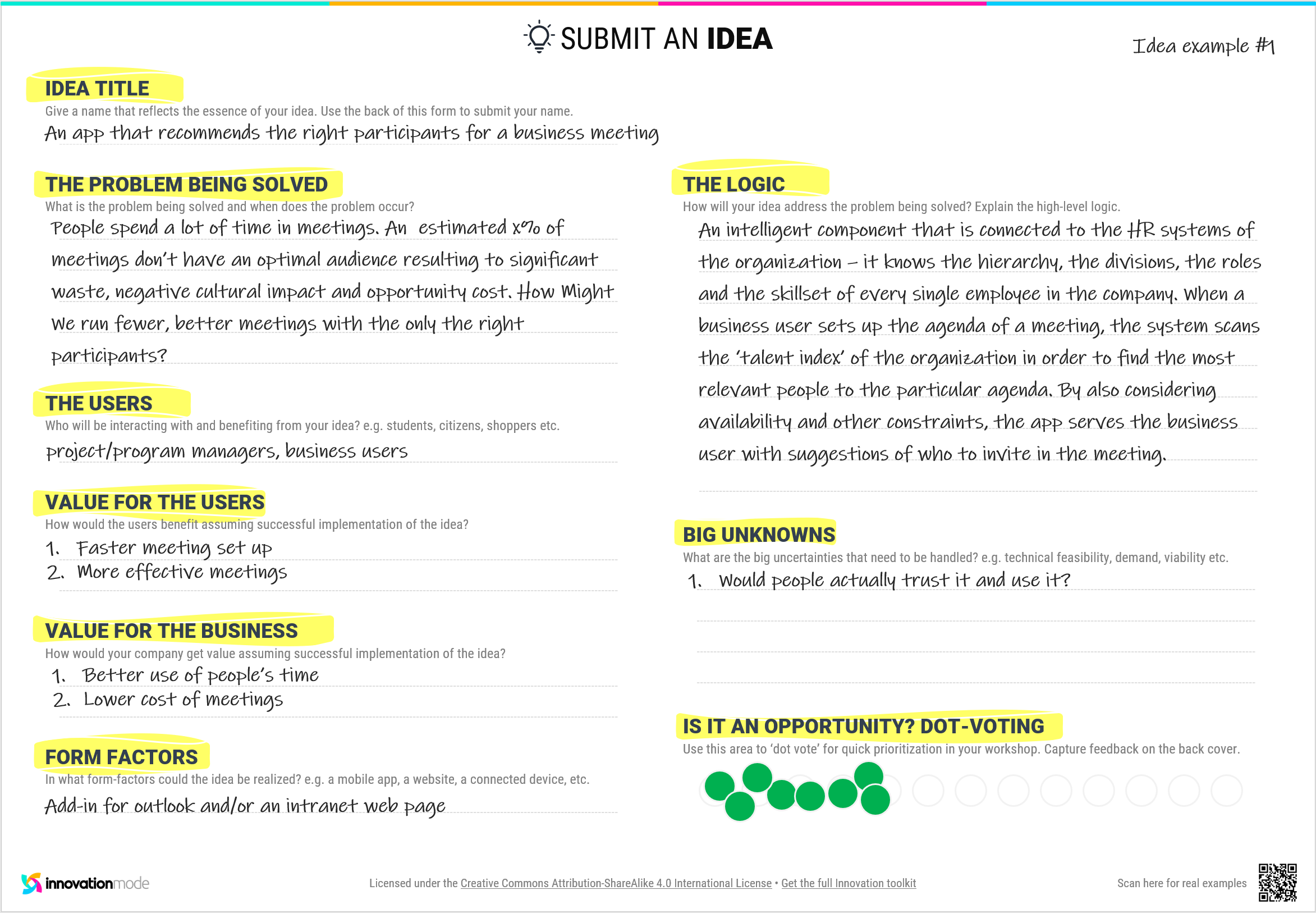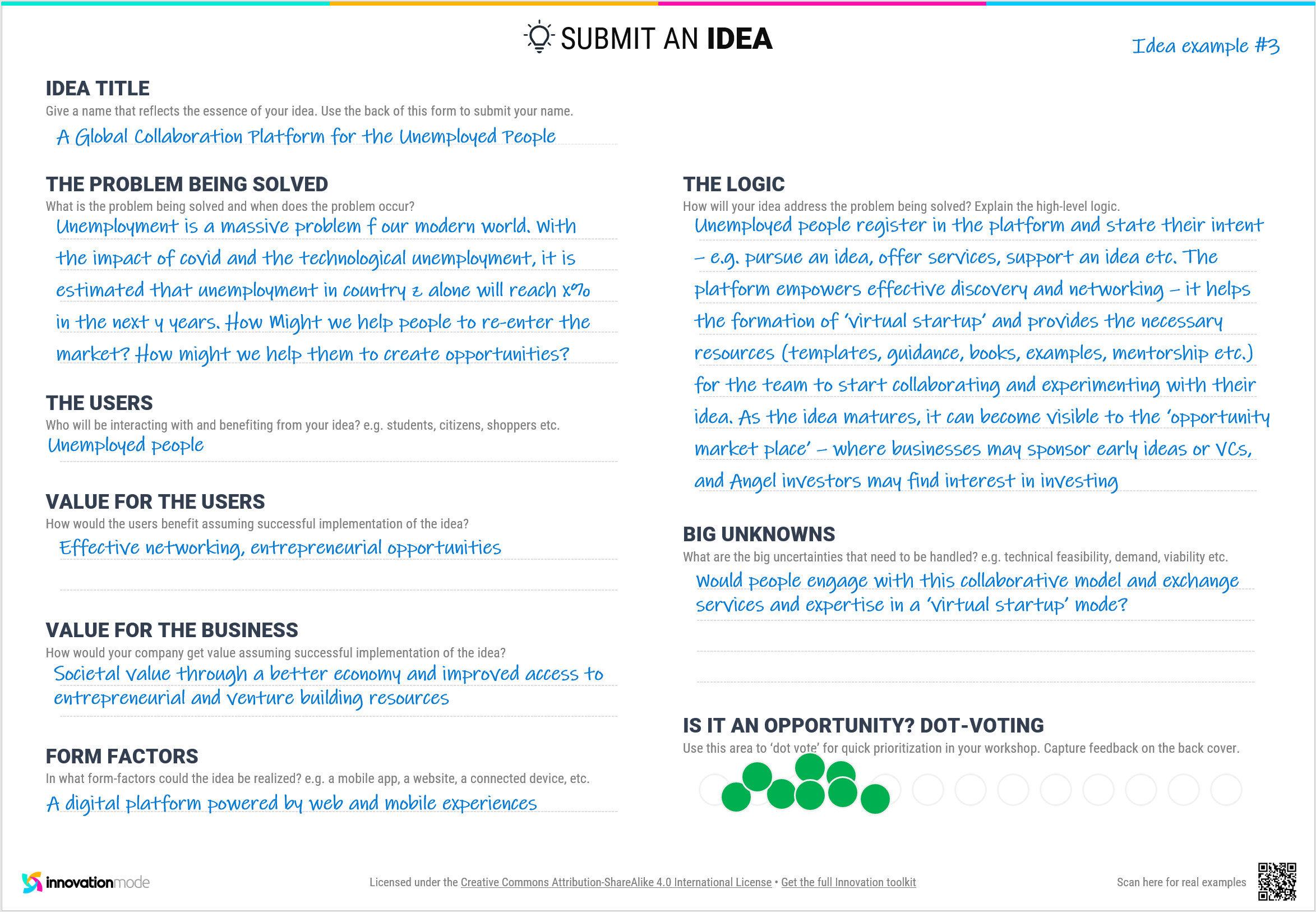The Business Idea Template: Boost Innovation with Structured Ideation
Transform your team's brainstorming sessions into a powerful engine for innovation. Capture early-stage ideas consistently and accelerate your innovation process with our proven Business IDEA template. Empower your teams to think creatively and innovate faster
Unlock Innovation with the Business Idea Template
The Business IDEA template is designed to help innovators communicate their ideas clearly and effectively. Too often, ideas fail to gain traction due to lack of clarity. This template provides a standard format that allows teams to quickly summarize their concepts in a way that is easy to share, discover, and understand across teams and departments.
Based on the Universal Model for Ideas as outlined in The Innovation Mode, the template can be used independently or during structured brainstorming sessions. It introduces a common 'innovation language,' making it easier for ideas to be recognized by key stakeholders and ignite valuable business discussions.
Key Components of the Business IDEA Template
The template is divided into four key sections, each designed to guide innovators through a structured ideation process:
Idea Title and Problem Solved. The first section prompts the ideator to summarize the core of the idea with a clear title, such as "A wearable device that measures noise levels." The ‘problem solved’ section asks the ideator to define the context—what problem is being addressed, and why it matters. For example, "The device helps users monitor and control exposure to harmful noise levels."
Users, Value & Form Factors. This section helps define the target audience (e.g., field workers), the value the solution provides to users (e.g., helping them protect against noise-induced health issues), and the value to the company (e.g., generating revenue through app subscriptions). It also prompts the ideator to consider possible forms the idea could take, such as a mobile app or web platform.
Logic and Execution. Here, the ideator explains how the idea works and the mechanics behind it. For example, "The app alerts users when noise exposure exceeds safe limits." This section details the technical aspects, including data requirements and any hardware needed for the idea to function.
Big Unknowns. Every new idea comes with uncertainties. This section enables the ideator to list potential challenges or unanswered questions, helping teams identify the key risks early and focus on areas that need further research or testing.
Real-World Business Idea Template Examples: Innovation Templates in Action
Business Idea Template Example #1 - An app that recommends the right participants for a business meeting
Business Idea Template Example #2 - An augmented reality, in-shop shopping assistant for consumers
Business Idea Template Example #3 - A Global Collaboration Platform for the Unemployed People
Download the idea template (pdf) or click below to buy the complete innovation toolkit including the editable idea template




